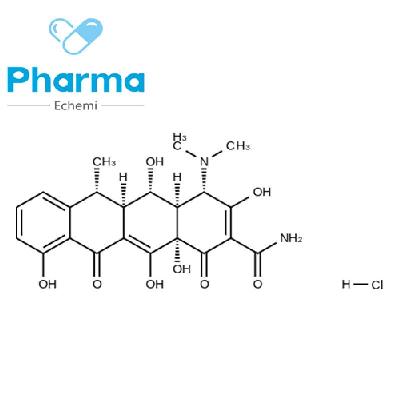Data show that there are more than 20 million patients with various rare diseases in China, and more than 200,000
new patients are added every year.
The number of patients with rare causes is small, research and development is difficult, and many patients still have the problem of no drug available, which has attracted great attention
from the country.
Recently, the deputy director of the Economic Committee of the National Committee of the Chinese People's Political Consultative Conference proposed that to encourage the research and development of rare disease drugs, it is necessary to formulate special policies
that conform to the law of rare diseases.
Encouraging enterprises to develop drugs for the treatment of rare diseases is the key to
solving the problem that there is no drug available for rare diseases.
According to Frost & Sullivan's forecast, the domestic rare disease drug market will reach $1.
3 billion in 2020 and grow to $25.
9 billion in 2030.
Under the background of considerable market prospects, as well as the acceleration of the review and approval of rare disease drugs and the promotion of policies such as the inclusion of rare disease drugs in medical insurance, the research field of rare disease treatment has reached a new heat, attracting the active layout
of many multinational pharmaceutical companies and local pharmaceutical companies.
Recently, AstraZeneca announced that its first innovative drug for rare diseases, eculizumab, was officially launched
in China.
The drug is the world's first approved C5 complement inhibitor and is currently approved in China for the treatment of paroxysmal nocturnal hemoglobinuria (PNH) and atypical hemolytic uremic syndrome (aHUS)
in adults and children.
At this year's Expo, AstraZeneca said that the drug will land in Suzhou, Qingdao, Beijing, Shanghai, Tianjin, Hangzhou and other cities as soon as possible
.
Also laid out at this year's Expo are a large number of multinational pharmaceutical companies
such as Roche, Sanofi, Boehringer Ingelheim and so on.
Among them, Sanofi exhibited a number of rare disease drugs, including the first globally approved nanobody drug Cablivi, which is the first drug targeted for the treatment of acquired thrombotic thrombocytopenic purpura (aTTP
).
Nexviazyme, a new generation of enzyme replacement therapy (ERT) drugs for Pompe disease, was also unveiled, which has been awarded the FDA designation of "breakthrough therapy" and can significantly improve respiratory function and exercise capacity
in patients with Pompe disease.
Yichang Renfu's domestic clobazam tablets obtained the "Drug Registration Certificate" on September 14 this year, this rare disease drug can be used to treat refractory seizures in children, suitable for the combination treatment
of seizures in patients with Lennox-Gastaut syndrome (LGS) aged 2 years and older.
On October 22, Yichang Renfu gave the price of the product at the launch conference of chlorbazam tablets, which was 84 yuan / box
.
It is reported that at present, domestic clobazam tablets are entering the process of relevant hospitals in various provinces, and the progress of hanging nets in each province is different
.
According to incomplete statistics, at present, there are a large number of pharmaceutical companies in China, such as Hengrui Pharmaceutical, Shanghai Pharmaceutical, Hansen Pharmaceutical, Sunflower Pharmaceutical, BeiGene, Junshi Biologics, CACAM, and Chia Tai Tianqing, which are actively deploying
in the field of rare disease treatment.
At present, the number of rare disease drugs listed in China is increasing, and the State Food and Drug Administration listed a total of 6 rare disease drugs in 2018, 21 in 2021, and a total of 56 rare disease drugs have been approved for marketing in 4 years, which continues to bring hope to patients
.
In order to allow rare disease patients to achieve "medicine and medical insurance", medical insurance has also paid great attention to rare disease treatment drugs in recent years
.
It is reported that since 2018, 19 new rare disease drugs have been added to the medical insurance drug list through medical insurance negotiations, with an average price reduction of 52.
6%.
In addition, in the "2022 National Basic Medical Insurance, Work-related Injury Insurance and Maternity Insurance Drug Catalogue Adjustment Approved Formal Review Declared Drug List" released this year, a total of 19 kinds of rare disease drugs involved in the "First Batch of Rare Disease Catalogue", and more and more rare disease drugs may enter medical insurance in the future to reduce the burden
on patients.
={"common":{"bdSnsKey":{},"bdText":"","bdMini":"1","bdMiniList":false,"bdPic":"","bdStyle":"0","bdSize":"32"},"share":{},"image":{"viewList":[" weixin","sqq","qzone","tsina","tqq","tsohu","tieba","renren","youdao","fx","ty","fbook","twi","copy","print"],"viewText":"share:","viewSize":"24"},"selectShare":{" bdContainerClass":null,"bdSelectMiniList":["weixin","sqq","qzone","tsina","tqq","tsohu","tieba","renren","youdao","fx","ty","fbook","twi","copy","print"]}}; with(document)0[(getElementsByTagName('head')[0]|| body).
appendChild(createElement('script')).
src='http://bdimg.
share.
baidu.
com/static/api/js/share.
js?v=89860593.
js?cdnversion='+~(-new Date()/36e5)]; 






